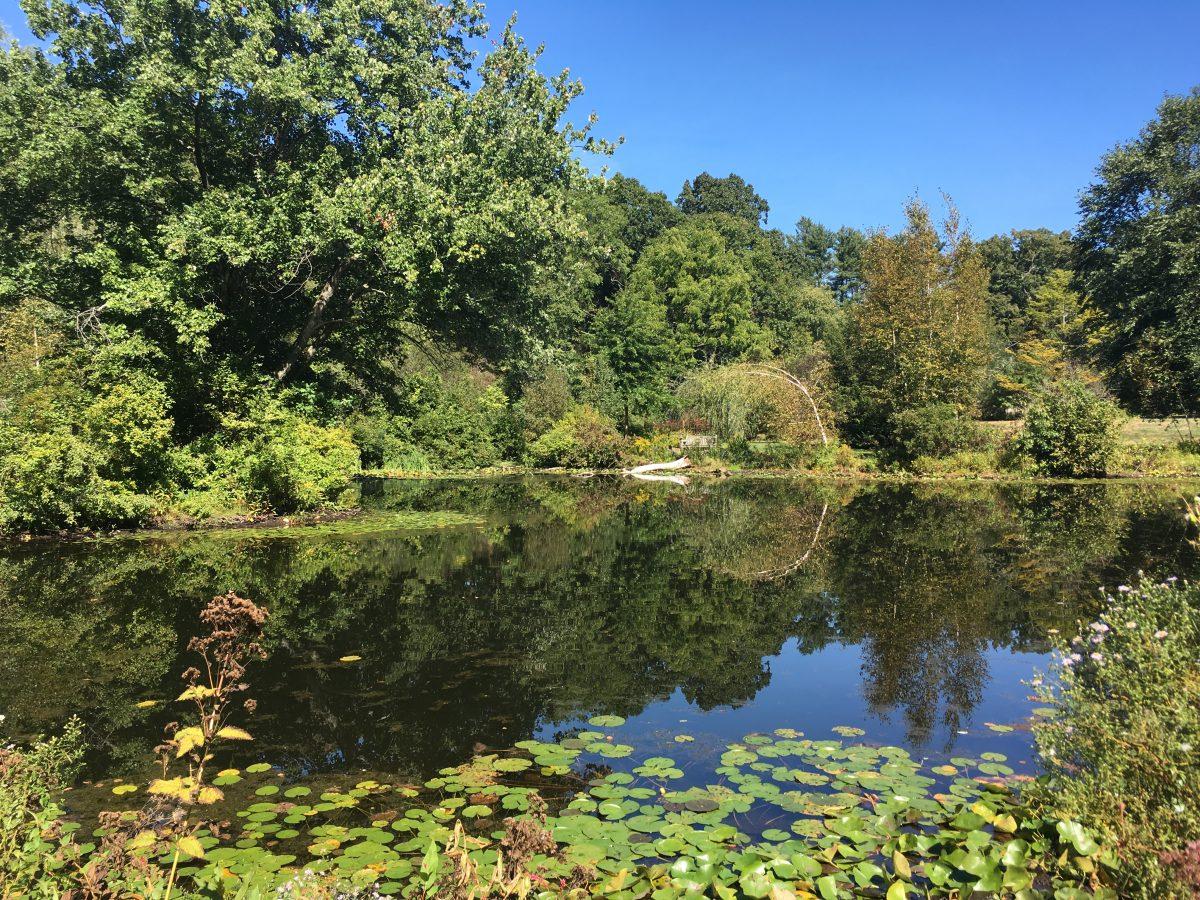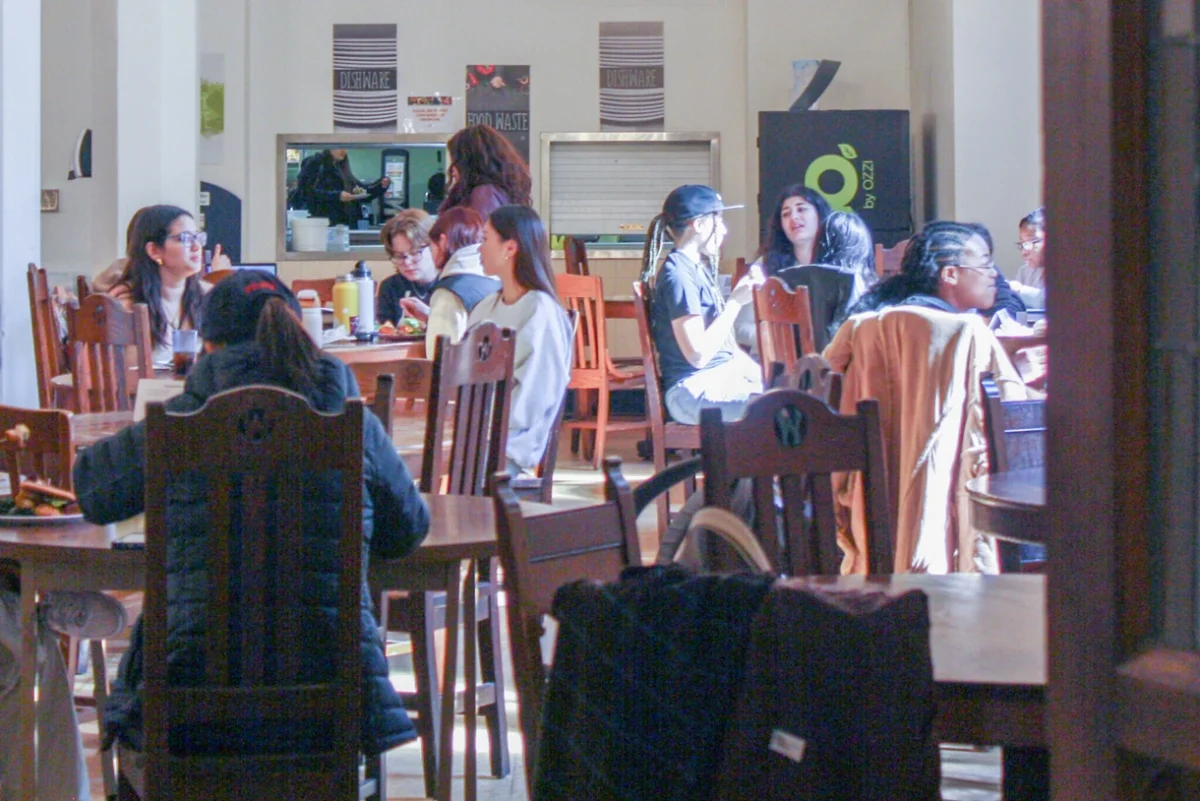As part of Wellesley College’s Strategic Sustainability Plan 2016-2026, the College is exploring options to switch the supply of water for Paramecium Pond away from drinking water. This effort comes as part of the plan’s aim to reduce potable water consumption on campus by eleven percent by 2026 in order to attain a 50 percent reduction below 1999 levels.
While its rich biodiversity might suggest otherwise, Paramecium Pond is not a natural creation. In Jean Glasscock’s “Wellesley College, 1875-1975: A Century of Women,” she states that the pond was created in the 1920s and 1930s from a swamp to become a part of the Alexandra Botanic Gardens. Later, a new water supply had to be established to maintain a consistent water level in the pond. A waterfall and brook, now known as the Silver Thread, was thus constructed.
Today, the College transports twelve million gallons of drinking water to Paramecium Pond, according to data published in the College’s Strategic Sustainability Plan. When compared to the campus total potable water consumption in 2014 (76,603,590 gallons), Paramecium Pond constituted a significant 16 percent of the campus’s total. The use of potable water also raises chemicals and energy cost for water treatment.
Sarah Koenig ’17, a student member of the Advisory Committee on Environmental Sustainability, believes that in light of both the amount and the type of water used to maintain Paramecium Pond, the current system is unsustainable.
“The campus is designed to look so natural, but it’s actually using unnatural systems to power them, especially when we have a natural supply of water on this campus,” Koenig said.
In addition, the lack of an effective drainage system for the pond encourages sediments transported into the pond from its edges and from the Silver Thread to settle at the bottom of the pond. This buildup, along with the accumulation of organic material in the pond, decreases the pond’s depth over time. This phenomenon forced the College to completely drain and dredge the pond in 1975 and again in 1995, making the total cost of maintaining Paramecium Pond a high one on a daily and extended time scale.
The changes proposed involve installing a recirculating water system of non-potable water to feed Paramecium Pond. Tetra Tech, an environmental engineering firm, was hired to redesign the system. Options for the source of non-potable water include water from Lake Waban and groundwater.
Kristina Jones, Director of the Wellesley College Botanic Gardens, stated that the Facilities department, which oversees the Paramecium Pond re-engineering project, hopes to have the new circulation system in place by late spring.
However, many uncertainties remain about the switch, particularly in terms of its impact on the ecosystems in Paramecium Pond and the Silver Thread. The lack of information on the pond’s existing physical, biological and social environment provides unique course material and opportunities for student and faculty research activity, particularly from the Biological Sciences, Geosciences and Environmental Studies departments.
Jones drew attention to the interdisciplinary nature of student and faculty involvement. She also highlighted how the faculty and student involvement was part of the Paulson Initiative, a five-year initiative sponsored by alumna Wendy Judge Paulson ‘69 that aims to reshape the College’s relationship with its landscape.
“Tetra Tech will be monitoring several aspects of the pond, supplemented by data collected by Earth Processes and the Environment (GEOS 101) and Introductory Organismal Biology (BISC 111/113) classes—the biology classes sampled the diversity of zooplankton—and students supported by the Paulson Initiative,” Jones said.
Daniel Brabander, Professor of Geosciences, has incorporated Paramecium Pond into his environmental studies and geosciences classes even before the current sustainability plan with the intention to reengineer Paramecium Pond was released. His 2006 ES 201 class explored the consequences of switching the pond’s water supply away from filtered water. With the help of Maria Waller and Kathleen Gilbert, instructors in the geosciences laboratory, Brabander’s current GEOS 101 class will work on a semester-long project that aims to describe processes operating in Paramecium Pond. Students will apply concepts and analytical techniques learned during the course to the project, such as the use of X-ray fluorescence (XRF), to analyze sediment from the pond.
Portia Krichman ’19, a student in Brabander’s GEOS 101 class, drew attention to how the impending changes to Paramecium Pond meant that the research activities in the class hold an additional layer of purpose.
“I’m enjoying this research project so far because the lab component involves actual, important research, as opposed to simple re-proving of theories,” Krichman said.
Krichman also highlighted the importance of communicating research results by students to better decision-making over re-engineering Paramecium Pond. “I like that students are involved so that we can be in dialogue with the people who are leading this project,”





